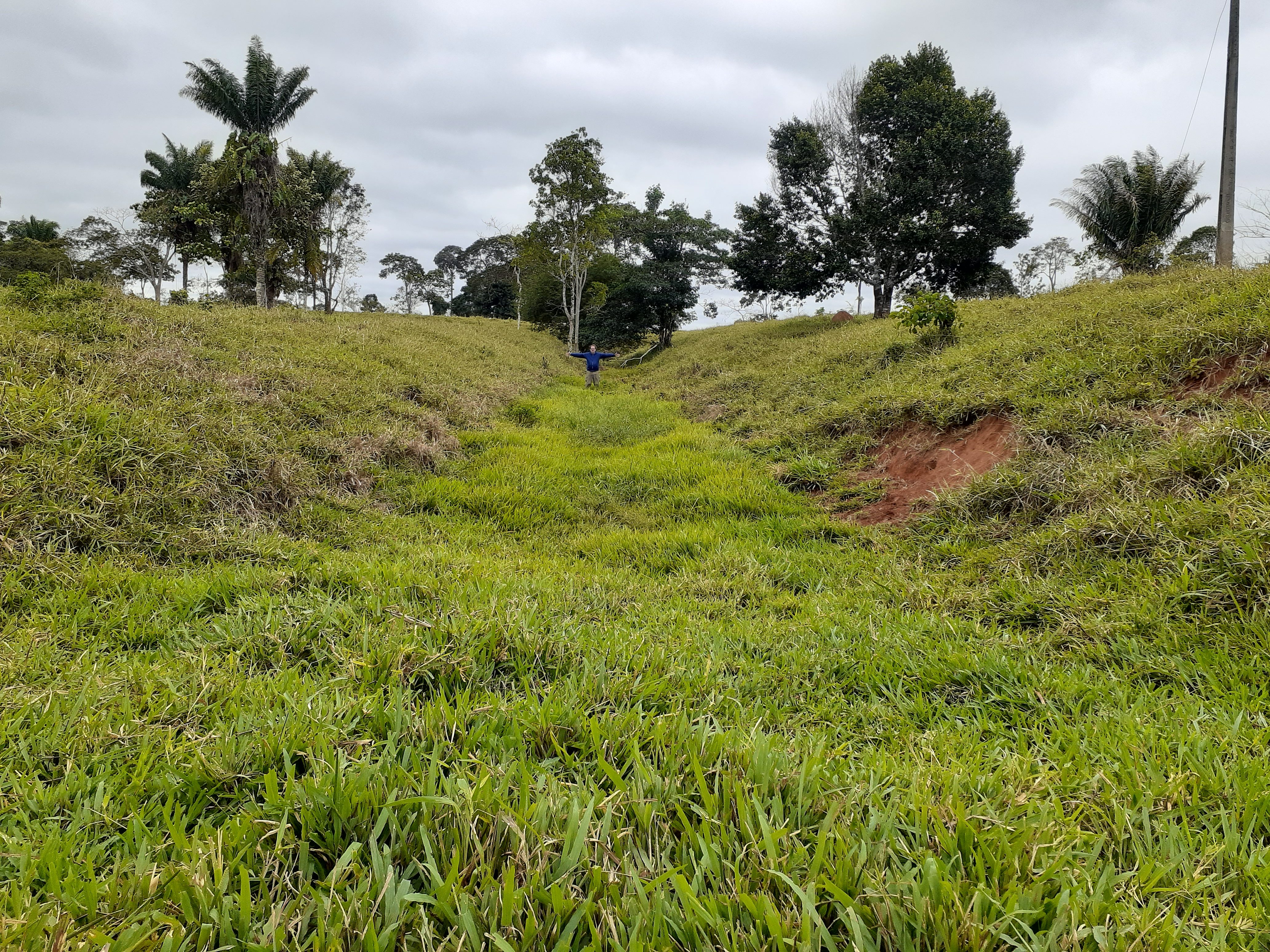April 29, 2024

To celebrate our 2024-2025 Grant recipients, we reached out to our winners to learn about their projects and their experiences in archaeology. We’re excited for you to meet Dr. Robert Walker, one of this year’s Ellen and Charles Steinmetz Endowment for Archaeology Grant recipients.
The Ellen and Charles Steinmetz Endowment for Archaeology Grant Recipient: Dr. Robert Walker; University of Missouri
With a 2024 AIA grant from the Ellen and Charles Steinmetz Endowment for Archaeology an international team of American, Brazilian, and Indigenous researchers, including Dr. Robert Walker (University of Missouri), will discover, document, analyze, and publish the amazing geoglyphs of the southern rim of Amazonia. Geoglyphs are massive earthworks constructed with ditches and mounds to create geometric shapes that are often interconnected with ancient road networks. These impressive geoglyphs of Amazonia showcase ancient indigenous social complexity and organization as they engineered ecosystems and made large scale modifications to entire landscapes. The project team will use a combination of satellite imagery, artificial intelligence, LiDAR, and ground and aerial surveys to identify sites hidden beneath rainforest canopies. They will also determine the geographic extent of the geoglyphs and develop interactive tools to share results and promote the preservation of these important ancient indigenous archaeological sites.
How did you get your start in archaeology?
I grew up right near Chimney Rock National Monument in Colorado, so touring Pueblo sites was just what we did as a family. My first excavation was as an undergraduate at Colorado State, where we had the good fortune of being near the Kaplan-Hoover Bison Bonebed. My professor, Dr. Larry Todd, would take us out there to dig most afternoons and weekends.
Where in the world has archaeology brought you (fieldwork, research, conference travel, etc.)?
After many fieldwork seasons at bison bonebed sites around the Great Plains, I was drawn to Amazonia. Although understudied compared to other regions, Amazonia harbors early and abundant archaeological evidence for ancient social complexity and organization, such as monumental architecture, road networks, earthworks, raised fields, and expansive anthropogenic soils. Despite the often poor quality and acidic soils in difficult-to-clear rainforest environments, such impressive human niche construction and landscape modification have been discovered even in upland areas once considered unfavorable to large populations. So far, we have documented over 1,300 geoglyphs across the southern rim of Amazonia. These findings, combined with archaeological discoveries in other rainforest environments, continue to broaden our estimate of the adaptability and complexity of humans in tropical rainforests.
What is one of the most memorable things that has happened to you in the field?
Last summer, using LiDAR imagery of newly detected geoglyphs still protected by forest, we ground-truthed a complex of four geoglyphs connected by ancient roads. It was amazing to visit such undisturbed sites, contrasting with most geoglyphs currently threatened by cattle grazing and agriculture.
How has the AIA contributed to your success/professional goals?
With a 2024 AIA grant from the Ellen and Charles Steinmetz Endowment for Archaeology, an international team of American, Brazilian, and Indigenous researchers will identify, document, analyze, and publish the massive earthwork geoglyphs of the southern rim of Amazonia while developing interactive tools to share results and promote the preservation of these important ancient indigenous archaeological sites.
Learn more about what Grant opportunities are available through the AIA or reach out to our Programs and Professional Services Coordinator, Kati Albert at kalbert@archaeological.org.